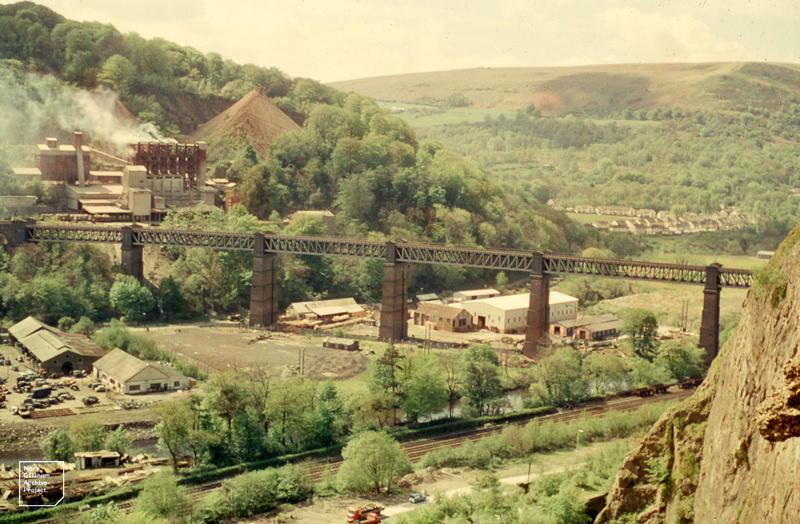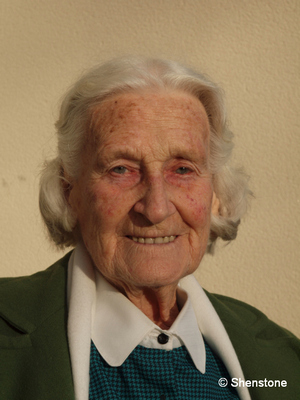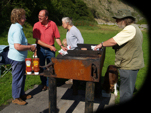
Cardiff
Naturalists' Society
Cymdeithas Naturiaethwyr
Caerdydd
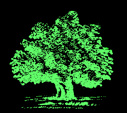
Dr Mary E Gillham (1921-2013) 96th President
|
Back to the 150th Anniversary index Mary Eleanor Gillham was born in Ealing, London on November 26th 1921. 
Dr Mary Gillham MBE Daughter to a dressmaker and wood and metalwork teacher, there was little in her background which would indicate a future career in academia. However, as a young girl Mary developed a keen interest in plants, collecting flowers to press and learning about the different species. Mary was an active member of the Girlguiding movement – this is a page from her Poppy Patrol book written in 1936 when she was 14. 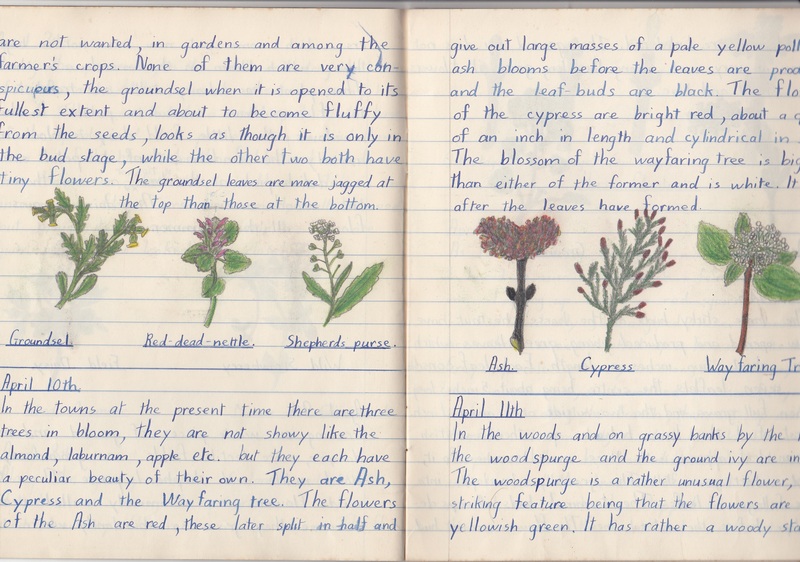
Poppy Patrol book While there was no history of botanising in the family, they were definitely an active and outdoorsy one. Mary’s family and her mother’s brother’s family went on holidays together and were at the vanguard of the new camping movement. Family holidays around the UK were common and they even went on a road trip as far as Basel in Switzerland in 1939 (where she and her cousins danced with German boys) making it back to the UK just a few weeks before war was declared. 
Gillham Family with Car known as Gillham Motor Transport in 1939 Germany Despite an already-present love for nature and an inherent need to write down everything she saw Mary was destined to work for the City Council in London until WWII broke out, when she immediately applied to join the Women’s Land Army (WLA). Subsequently Mary spent the war years working on farms which enabled her to spend more time in the countryside whilst also developing an affection for wildlife, agriculture and, in particular, donkeys and horses. She said "It was the only way I could be sure of being in the country…" 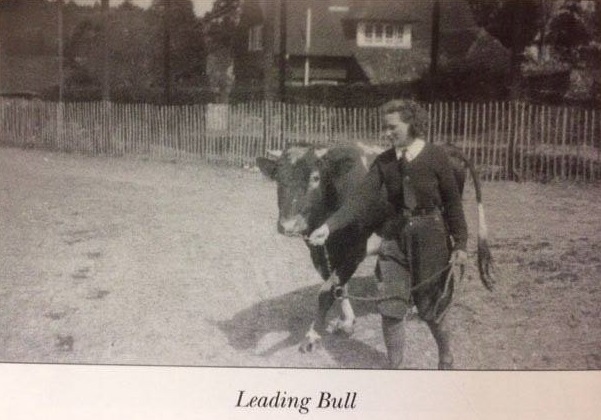
Mary as a Land Girl It was this period in her life that she would reflect on in later years whilst bemoaning the urbanisation of the countryside and the separation of people, especially children, from nature. As a consequence of enlisting in the Women's Land Army, Mary was given the opportunity of a university education and was supported by the British Government through an agriculture and botany undergraduate degree at the University of Aberystwyth under the tutelage of Prof. Lily Newton On completion of her degree and inspired by Ronald Lockley’s Dream Island description of Skokholm, Mary decided she wanted to undertake the research for her PhD on some of Pembrokeshire’s islands. Between 1948 and 1953 Mary spent many months on the islands recording the vegetation and investigating the effects of substrate, environmental conditions, grazing and birds on the observed differences. Using quadrats, transects and exclusion pens Mary mapped the species found on each island and attempted to explain the impact each factor had on the flora present. You can read about this in the online version of her thesis (click the picture to read it) 
Despite their remoteness an active set of students, researchers and conservationists spent time on the islands and their work overlapped, informing each other’s research. This may have been the origin of Mary’s ‘landscape-wide’ approach to nature which incorporated geology, chemistry and fauna into her assessment and description of habitats. Indeed, Mary quotes Peter Conder (Skokholm warden during the 1940s and 50s) as saying “If it is on the island, we are interested – be it rocks, weeds or insects”. The camaraderie forged by the adventurous souls who worked on the islands, combined with a sense of space and wilderness, resulted in a lifelong affection for islands. And this affection, founded on the interactions between birds, mammals and plants, set Mary on the path of her international endeavours on the islands of Australia’s Bass Strait, South Africa’s Langebaarn Islands, the Aldabra atolls and Macquarie Post PhD Mary spent 3½ years as an assistant lecturer in botany at the University of Exeter before instigating an international migration that was to set her apart from many of her contemporaries. In 1957 Mary began an exchange lectureship at Massey University in New Zealand, followed by three years’ teaching and researching in Australia at Melbourne University, with multiple field seasons on remote Bass Strait islands studying muttonbird colonies. Australia also held a great personal affection for Mary and represented a happy and adventurous period of her life, including going on a 5700-mile road trip around southern and central Australia with three friends in a VW campervan. Follow the route of their trip and pictures from the journey here: During Mary’s Australia stay, in 1959, the opportunity to join an Australian National Antarctic Research Expedition (ANARE) to Macquarie Island became a reality and the quartet of Isobel Bennett, Hope MacPherson (Australian), Susan Ingham and Mary Gillham (British) became members of the first expedition of female scientists to the Antarctic. The inclusion of women scientists on a research trip to the Antarctic region was so inconceivable that their involvement was refused several times before the Australian Acting Minister for External Affairs finally made the decision to allow the women to join the expedition just three weeks before they were due to sail. 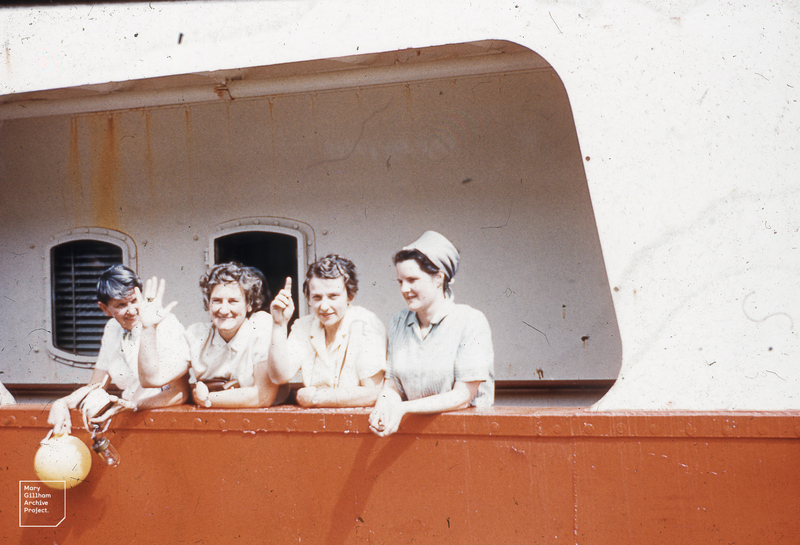
The performance and behaviour of the four women came under intense scrutiny, by the media, by their fellow ANARE crew members, by government, university and other institutional officials. If they had not acquitted themselves with complete decorum and undertaken their scientific research in an exemplary manner, it’s highly likely the future involvement of women in similar scientific expeditions would have been greatly hindered and delayed. The four female scientists were present to support the on-going study of aspects of animal and plant life on the island, with marine biologists Isobel and Hope looking at the ecology of inter-tidal origins and shells respectively, biologist Susan at the lives of Bandit Penguins, Wandering Albatrosses and Elephant Seals while botanist Mary’s brief was to analyse the effects of sea birds on the island’s vegetation. The trip passed successfully yet it was still a number of years before women returned to Macquarie and over 10 years before a woman overwintered there. Mary returned to the UK in 1962 (via South Africa and Namibia) and settled in south Wales for the remainder of her life, spending over 60 years recording wildlife and working to protect species and habitats across the country. As well as being a lecturer at Cardiff University Mary spent time as President of the Cardiff Naturalists’ Society and Gwent Wildlife Trust, Vice President of the Merthyr and District Naturalists’ Society, a member of the Welsh committees of the Royal Society for the Protection of Birds and the Botanical Society of the British Isles, a council member of the British Trust for Ornithology and the Society for the Promotion of Nature Reserves, and as a Brecon Beacons National Park committee member. Mary is visible on the left hand side of this picture taken on the Ogof Fynnon Ddu Nature reserve when the group stopped for lunch in the sunshine 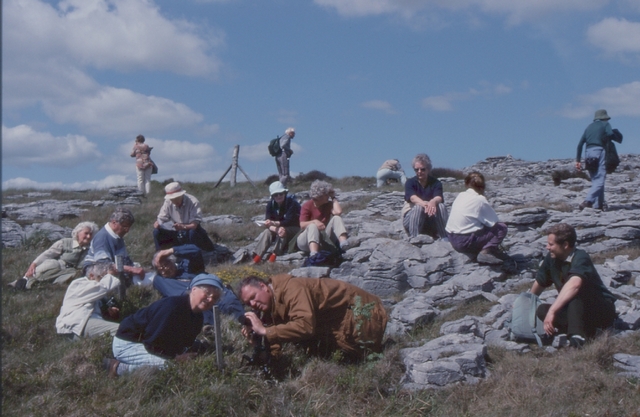
Mary was instrumental in the protection of acres of Welsh habitat including Coed y Bedw, Cosmeston, Forest Farm and the Howardian Nature Reserve, and was routinely consulted on how to manage the change of south Wales’s landscapes from industrial to more natural ones with the decline of extractive industries. Mary Gillham spent time travelling, researching, and leading trips to at least 38 countries around the world (including as one of the first female scientists to Aldabra). She wrote over 20 books on natural history, 50 scientific papers, countless newspaper and magazine articles as well as contributing to the education of thousands through her work as an extramural lecturer. Mary Gillham was awarded an MBE in 2008 for services to nature conservation and remains an inspirational role model both for her work as an educator and by forging a trail little trod by women before her. Mary Gillham’s legacy Mary was obviously a pioneer when it came to international travel, the locations where she researched, being one of the first 4 women scientists to go to the Antarctic region and (possibly) the first female scientist to visit Aldabra in 1970. She was in a position of authority and the government, university and conservation organisations looked to her frequently for advice. During Mary’s life she advocated strongly for many areas to be protected – and she succeeded in ensuring many acres of habitat were protected as nature reserves or turned in to green spaces for members of the public to enjoy.
Similarly, upon her death in 2013 Mary left money to many of the local conservation organisations including the Wildlife Trust (which constructed the Mary Gillham hide at their flagship south Wales nature reserve at Parc Slip )
and also one at Forest Farm, which constructed a hide and wetland in her memory.
She was also – and still should be – a role model precisely because she achieved all of these things and because she was so willing to share her knowledge and support people through learning about wildlife and why we should conserve it. In honour of this aim the Cardiff Naturalists' Society used funds from the sale of many of Mary's books which had been left to them to help fund it's annual Cardiff Naturalists' Society Biosciences prize and her name was added to the honour from that date At the end of her life Mary’s archive of written notes, travel journals, wildlife diaries, unpublished manuscripts, illustrations and 35,000 slides were passed to the South East Wales Biodiversity Records Centre which received Heritage Lottery funding to digitise the c. 150,000 wildlife records and tell the story of this ground-breaking scientist. This archive contains a wealth of wildlife records but is also a social-cultural record and a record of landscape change, particularly following the changing landscape of the Welsh valleys from industrial to green.
You can find out more about Mary’s life and the Mary Gillham Archive Project at http://www.marygillhamarchiveproject.com/ With thanks to Al Reeve of the Dr Mary Gillham Archive Project for the write-up and providing the pictures and to Clive Woodhead for the picture of the Forest Farm hide. Additional video by Robin Davies-Rollinson
Back to the 150th Anniversary index Before this... W. Glynn Hopkins (?-1996) 95th President Next up... Henry Royston Loyn M.A., D.LITT., F.S.A. (1922-2000) 97th President See our Full list of Presidents These pages are part of the Cardiff Naturalists' Society 150th Anniversary celebrations and are about our history and are celebrating the people who developed our Society and helped build the city and the cultural heritage of Cardiff. You can read more about that using the links above If you want to read about the ways we study the wildlife and environment of the Cardiff area and its surroundings, and about the talks we have about the wildlife of the world, and find the programme of talks, walks and other events that we do then please take a look at our main website, our blog and our facebook and twitter feeds for up to date news |


